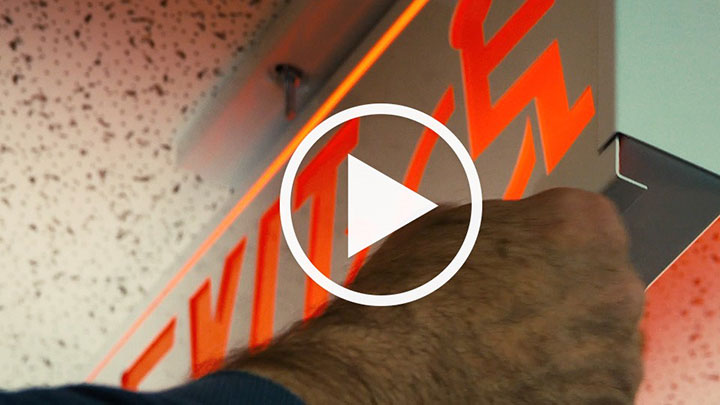

Make Sure Your Business or Building is Up to Code
Exits need to be clearly marked, additional signs should be in place to direct people towards the nearest exit, and egress lighting must be provided in the event of a power outage or emergency.
Your local inspector can tell you what your state requires, and tell you what you need to install and where they should be installed in your building.
Bulbs.com offers a variety of options to get all the exit and emergency products you need to meet your local codes.
Smoke detectors and carbon monoxide detectors are life-saving devices that play a vital role in building safety. Understanding their functions and proper placement is crucial for ensuring the safety of your property.
Smoke detectors alert occupants to the presence of smoke, a potential indicator of a fire. They come in two main types: photoelectric and ionization. Photoelectric alarms use a light beam to detect smoke particles, making them more effective at identifying slow-burning fires. Ionization alarms use electrically charged particles to sense smoke, and they may be quicker to respond to flaming fires.
Carbon monoxide detectors, on the other hand, protect against carbon monoxide (CO) poisoning. CO is an odorless and colorless gas produced by incomplete combustion of fuels. Since CO can't be detected by human senses, a detector is essential to warn occupants of its presence. Carbon monoxide detectors should be installed outside sleeping areas on every floor of your home, including the basement. If a CO alarm sounds, evacuate your home immediately and call emergency services from a safe location outside.
Fire extinguishers are portable devices designed for use by everyday people to extinguish small fires in their early stages. They come in various types, each suited to different fire classes (fuel types). The most common type is the multi-purpose extinguisher, which can tackle fires involving ordinary combustibles (Class A), flammable liquids (Class B), and energized electrical equipment (Class C). Using a fire extinguisher requires following the PASS method: Pull the pin, Aim the nozzle at the base of the fire, Squeeze the lever to discharge the agent, and Sweep the nozzle back and forth to cover the fire. Remember, fire extinguishers are for small fires only. If a fire is large or spreading rapidly, evacuate the building immediately and call the fire department.
Exit and emergency signs are vital components of any building's fire safety plan, guiding occupants towards safe exits during emergencies with low visibility. They are typically illuminated with red lettering or symbols to ensure maximum visibility, even in smoky conditions. Some signs are equipped with a backup batter, ensuring they remain lit during power outages. Building codes mandate the placement of exit signs at regular intervals along escape routes and above doorways leading outside. Proper exit sign installation and maintenance is crucial for ensuring the safety of building occupants in the event of a fire.